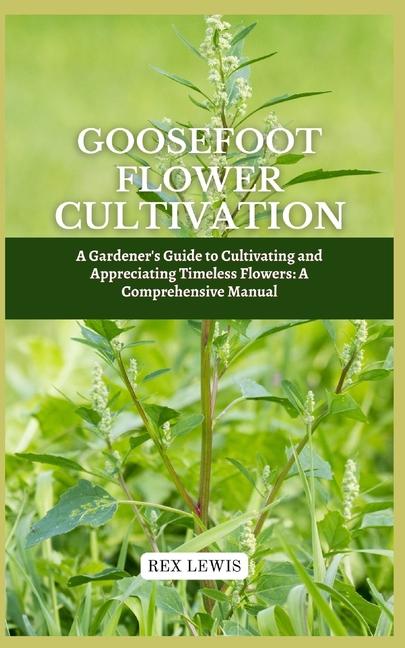Description
Goosefoot Flowers, Scientifically Referred To As Chenopodium, Are A Varied Group Of Flowering Plants That Belong To The Amaranthaceae Family. The Term "Goosefoot" Originates From The Morphology Of Their Leaves, Which Frequently Bear A Resemblance To The Footmark Of A Goose. These Plants Have A Broad Distribution Throughout Many Regions, Demonstrating Their Capacity To Adapt To Various Climates And Soil Conditions.
- Goosefoot Flowers Are Characterized By Their Frequently Unnoticeable Blossoms Clustered In Little Clusters. Certain Species Of Goosefoot Flowers Produce Seeds That Have Historically Been Utilized As A Source Of Food. Several Species In The Chenopodium Genus Are Renowned For Their Nutritional Content And Have Been Deliberately Grown As Pseudo-Cereals And Leafy Greens.
- Various Species Of Goosefoot, Including Chenopodium Quinoa, Have Achieved Worldwide Acclaim For Their Edible Seeds, Particularly Quinoa, Which Is Renowned For Its Abundant Protein Content And Nutritional Advantages. Quinoa Has Gained Widespread Popularity As A Versatile And Widely Used Food Staple Due To Its Gluten-Free Characteristics And Ability To Be Used In A Variety Of Gourmet Preparations.
- In Addition To Its Agricultural Relevance, Goosefoot Flowers Also Possess Ecological Worth. Certain Species Are Regarded As Crucial Sources Of Food For Wildlife, Playing A Vital Role In Maintaining The Diversity Of Their Natural Environments. Moreover, These Plants Can Contribute To Ecological Restoration By Successfully Adjusting And Flourishing In Disrupted Or Deteriorated Ecosystems.
To Summarize, Goosefoot Flowers Are A Varied Collection Of Plants That Hold Significance In Terms Of Their Economic, Nutritional, And Ecological Value. These Plants Have A Significant Role In Multiple Facets Of Human Life, Including Agriculture, Nutrition, And Environmental Conservation, Due To Their Unique Leaves And Precious Seeds.
- Goosefoot Flowers Are Characterized By Their Frequently Unnoticeable Blossoms Clustered In Little Clusters. Certain Species Of Goosefoot Flowers Produce Seeds That Have Historically Been Utilized As A Source Of Food. Several Species In The Chenopodium Genus Are Renowned For Their Nutritional Content And Have Been Deliberately Grown As Pseudo-Cereals And Leafy Greens.
- Various Species Of Goosefoot, Including Chenopodium Quinoa, Have Achieved Worldwide Acclaim For Their Edible Seeds, Particularly Quinoa, Which Is Renowned For Its Abundant Protein Content And Nutritional Advantages. Quinoa Has Gained Widespread Popularity As A Versatile And Widely Used Food Staple Due To Its Gluten-Free Characteristics And Ability To Be Used In A Variety Of Gourmet Preparations.
- In Addition To Its Agricultural Relevance, Goosefoot Flowers Also Possess Ecological Worth. Certain Species Are Regarded As Crucial Sources Of Food For Wildlife, Playing A Vital Role In Maintaining The Diversity Of Their Natural Environments. Moreover, These Plants Can Contribute To Ecological Restoration By Successfully Adjusting And Flourishing In Disrupted Or Deteriorated Ecosystems.
To Summarize, Goosefoot Flowers Are A Varied Collection Of Plants That Hold Significance In Terms Of Their Economic, Nutritional, And Ecological Value. These Plants Have A Significant Role In Multiple Facets Of Human Life, Including Agriculture, Nutrition, And Environmental Conservation, Due To Their Unique Leaves And Precious Seeds.
Last updated on
Product Details
- May 18, 2024 Pub Date:
- 9798326027993 ISBN-10:
- 9798326027993 ISBN-13:
- English Language




